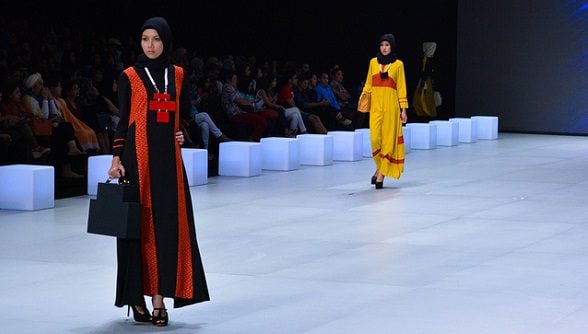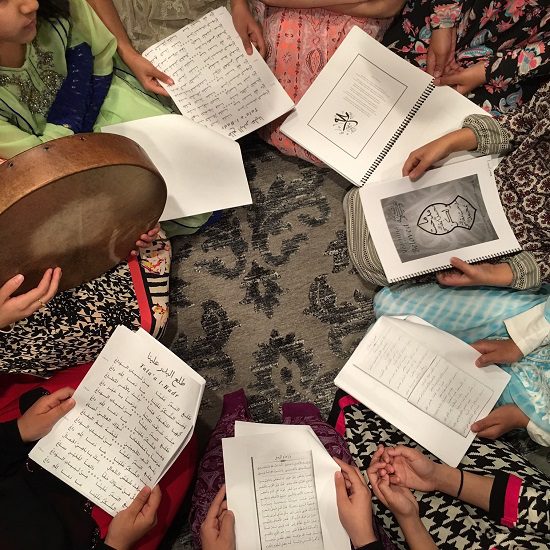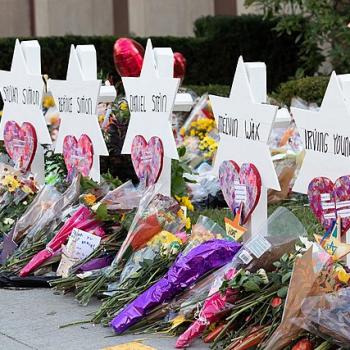
By Saideh Jamshidi
To cover or not to cover, that’s the problem, but to whom?
When Yves Saint Laurent co-founder Pierre Bergé recently advised fellow designers to have nothing to do with Muslim fashion, he sounded less like a renowned global fashion designer and more like the Ayatollah Khomeini, founder of the Islamic Republic of Iran, whose speeches I used to listen to during the beginning of the Iran revolution in 1979.
Bergé argued that designers’ main responsibility is to make women beautiful, not to “collaborate with this dictatorship which imposes this abominable thing by which we hide women and make them live a hidden life.”
Maybe Bergé was referring to the long-standing belief that Muslim women are oppressed and are victims because they do not fight for themselves and because their government makes them second-class citizens. I wonder if Berge ever watched news reports, or read stories of brave Iranian women who have been fighting to bring about democracy and independence during 1979 revolution. Has he ever watched news about Egyptian, Iraqi, Libyan, or Bahraini women who fought for their countries’ independence during the Arab Spring?
I grew up in the Islamic Republic of Iran, where I listened to Khoemeini argue that Western values were corrupt, evil and un-Islamic. He argued that “his interpretation of Islamic values” was valid, because he was an “expert” in interpreting those values. In order to save Iran from the West, he ordered Iranian women to cover from head to toe.
I grew up knowing that I must cover hair under scarf, body under maunto (a robe). Everything about me, as a woman, must be kept “unsexy.” But like all teenagers in Tehran, I practiced civil disobedience through my personal fashion. On every occasion I could find, I would expose my hair as much as I could; I would choose very tight maunto — as tight as the morality police could tolerate without arresting me.
I would laugh as loud as I could since laughing loud in the public for women was deemed un-Islamic. I would try to be “sexy” as much as I could in my own little way. At the time, I called my teenage rebellious acts “sexy Islam.” I was not the only one. There was a strong grassroots movement among Iranian women to oppose the revolution’s ideologies.
One of the core values of Western civilization is to respect and practice “freedom of expression.” It is in the Western DNA to allow women to decide what to wear, how much to cover or not cover and or how to carry oneself. In fact, many of us come to the west to practice just that — being ourselves. Because as much as we don’t want to be forced to cover, we don’t want to have that choice taken away from us as well.
An important product of the Western civilization is to give equal citizenship to women. But in the Iranian legal system, women were consider saghir, a term that Iranian Islamic law used to refer to women as incompetent. They wanted to control women by giving women fewer rights in Iran’s legal system.
Wrote Shelina Janmohamed in a column in the Telegraph:
The claim that Muslim women cannot make independent, carefully considered choices of their own (including determining their own fashion sense) is terribly insulting and reduce us to children… To claim that any woman can’t think of herself and must be helped to know what’s good for her is infantilization on steroids, and is a perfect example of the very attitude that feminists have been attempting to dismantle for centuries.
The uproar against Bergé’s comment among Muslim women activists has been loud. We know we are not saghir, and we know we are living in a society that that should respect who we are women.
Bergé is not the only one condemning Islamic fashion. Recently, a group of France Elite, including billionaire Elisabeth Badinter, called for the boycott of clothing lines that produces Islamic fashion. Also, the Instagram accounts of a number of Muslim women fashion bloggers were hacked around the world.
Although Khomeini was able to impose his narrow views about Islam on me and every women in Iran, we fought for what we thought it is right for us. Bergé, or other people who misunderstand Islam, might be able to stir the conversation about Islamic fashion. But they can’t take away our choice or stop the growth of Muslim fashion.
Women in the West have greater freedom to fight for what they think it is right for them.
Saideh Jamshidi is an Iranian-American journalist, and founder of Goltune, an online digital magazine focusing on Muslim women fashion and lifestyle.
Stay in touch! Like Altmuslim on Facebook:











